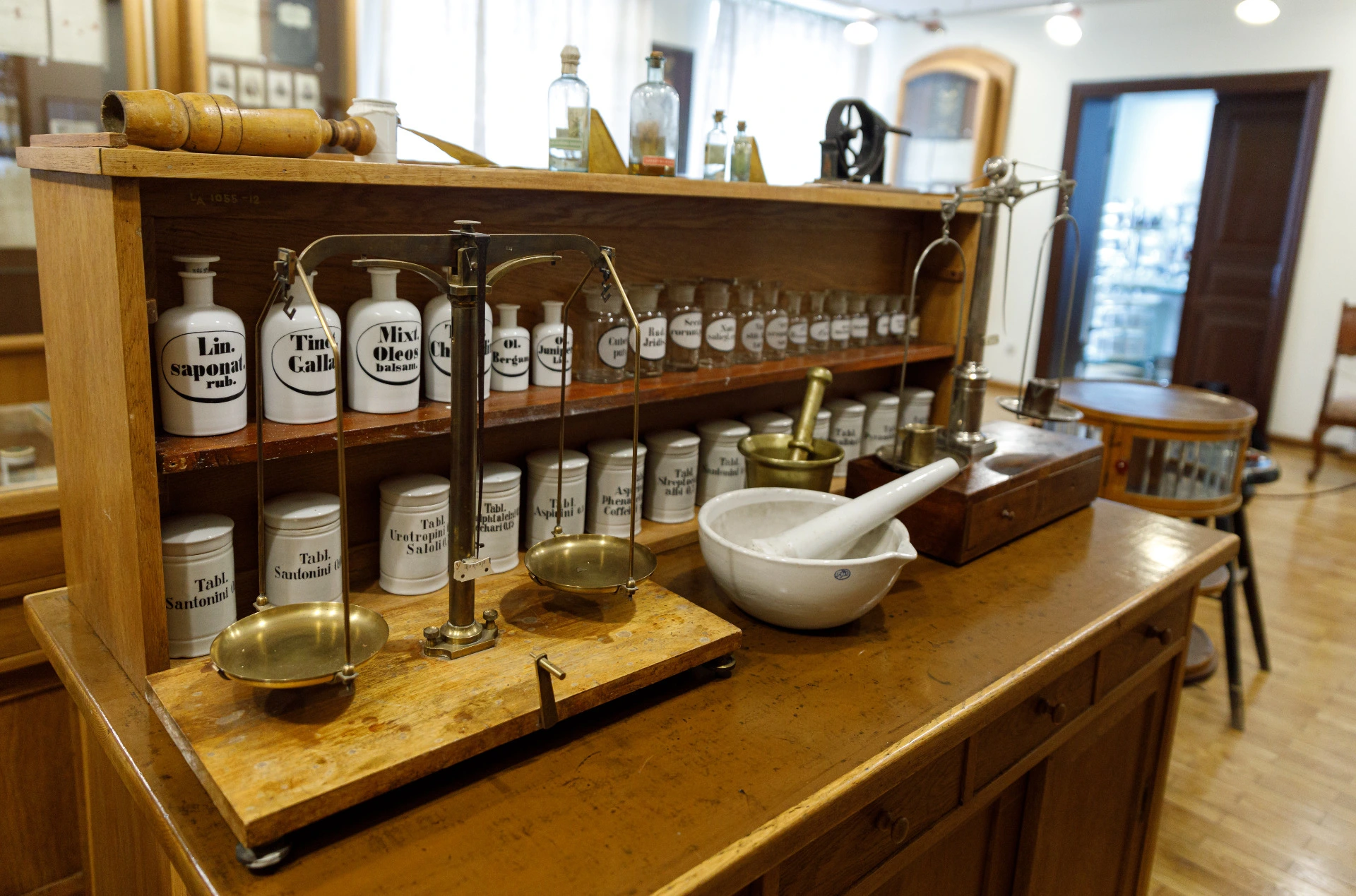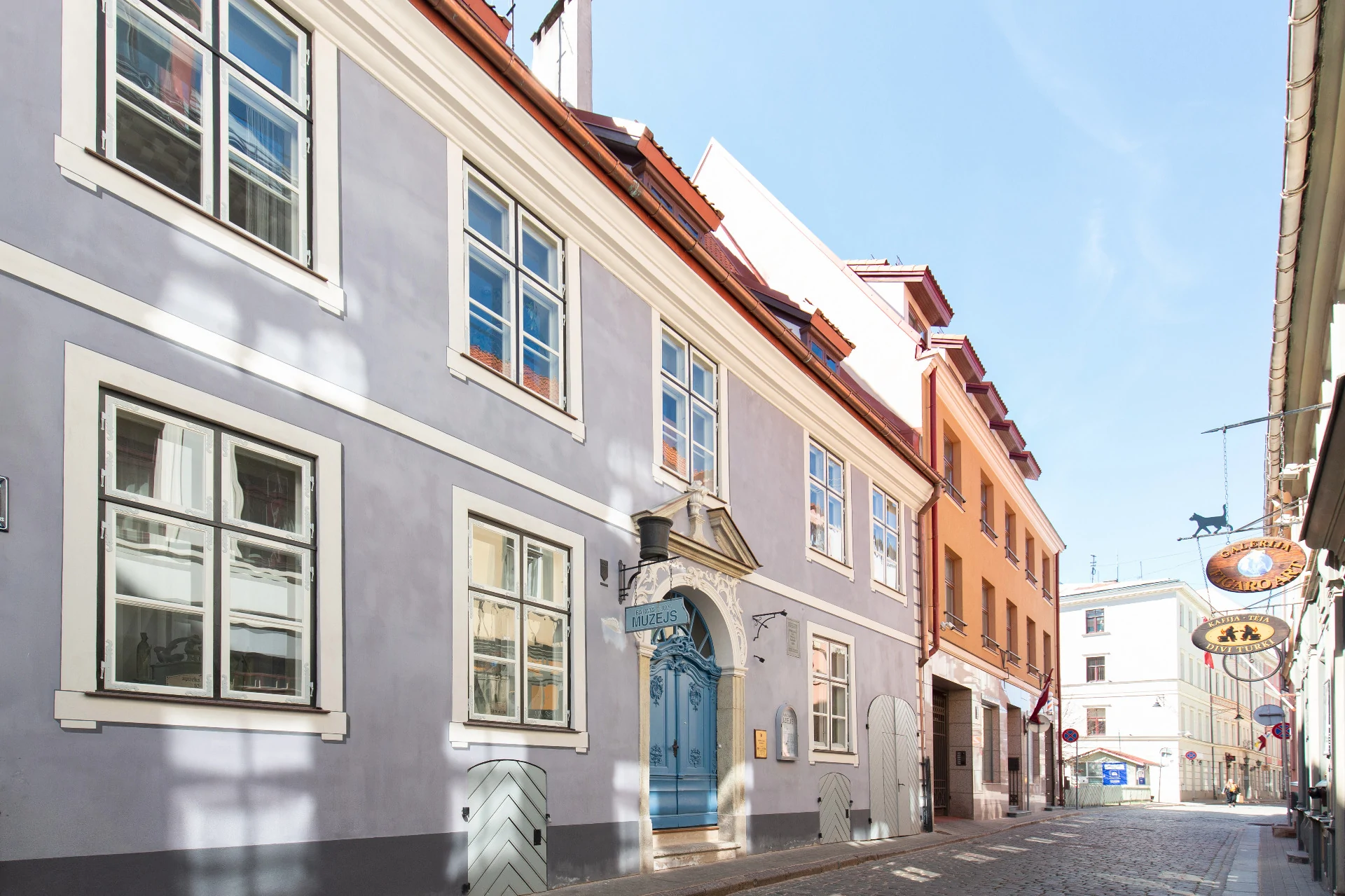Riga
LatviaHidden gem in Old Town showcasing Latvian and European pharmacy history.
Planning Tip
Limited English signage but impressive visual exhibits. Located in UNESCO World Heritage Old Town.
City Highlights
Latvian Museum of Pharmacy
Baltic pharmaceutical heritage
Historic manuscripts and tools
Quick Stats
Fun Facts
Hidden gem in UNESCO Old Town
17th-19th century pharmaceutical tools
Connected to major medical history museum
Pharmacy Museums in Riga
Discover pharmaceutical history and medical collections in Riga.

Latvian Museum of Pharmacy
Independent Museum
A hidden gem in Riga's Old Town showcasing Latvian and European pharmacy history through 17th–19th century tools, manuscripts, weighing scales, and medications. The Latvian Museum of Pharmacy, founded in 1987 in association with the Pauls Stradiņš Museum for History of Medicine, occupies a magnificent 18th-century architectural monument on Richard Wagner Street in Riga's UNESCO World Heritage Old Town. Spanning six exhibition halls with over 3,000 artifacts, the museum traces pharmacy's evolution from prehistoric herbal healing through medieval apothecaries to modern pharmaceutical practices, with dedicated exhibits on "History of the Development of Pharmacy in Latvia," "Pharmaceutical Vessels," "Traditional Medicine," and "Pharmacy-Laboratory in 18th and 19th Centuries." The collection includes rare documents and books from the 17th-19th centuries, authentic pharmacist tools and drug preparation devices, and medicines manufactured in Latvia during the 1920s and 1930s, all displayed within the authentic atmosphere of a historic pharmacy. Notable features include a charming backyard herb garden where healing plants were traditionally cultivated, recreated historical pharmacy interiors from different eras, and a comprehensive display of pharmaceutical vessels in imaginable shapes and sizes. Visitors appreciate the museum's educational value and well-preserved interior that maintains the mystical atmosphere of old-world pharmacy, making it an exceptional destination for understanding Latvia's rich pharmaceutical heritage within the broader context of European medical history.

Pauls Stradiņš Museum of the History of Medicine
independent museum
The Pauls Stradiņš Museum of the History of Medicine stands as one of the world's three largest medical history museums, established in 1957 by Professor Pauls Stradiņš (1896-1958), a renowned Latvian surgeon, oncologist, and medical historian who dedicated his life to documenting the evolution of medicine from ancient shamanic practices to modern scientific breakthroughs. This extraordinary institution, housed in a magnificent Neo-Renaissance building designed by Baltic German architect Heinrich Karl Scheel in 1875, contains over 203,000 artifacts that chronicle the development of medicine and pharmacy across centuries, including an exceptional collection originally assembled by Latvian pharmacist Dāvis Blūmentāls and Professor Jānis Maizīte, with significant contributions from the pharmaceutical societies of Riga and Kurzeme that were integrated into the museum's holdings in 1938. The museum's comprehensive permanent exhibition features meticulously recreated medieval monastery hospitals and pharmacies designed by Professor Stradiņš himself, showcasing historical pharmaceutical equipment, alchemical instruments, and traditional healing practices alongside dramatic displays of medieval medical treatments including plague houses, witch trials, mercury vapor baths, and early surgical procedures without anesthesia. Notable highlights include the museum's medieval town diorama, authentic apothecary reconstructions with period-appropriate pharmaceutical vessels and equipment, extensive collections of medical instruments from the 19th century professionalization of medicine, and unique exhibits featuring the personal effects of Nobel Prize winner Ilya Mechnikov, while the museum's space medicine hall displays remarkable artifacts from Soviet space exploration including the preserved remains of famous space-traveling animals. The museum serves as both a testament to Professor Stradiņš' vision of preserving medical heritage and a living educational institution that bridges traditional pharmaceutical knowledge with modern medical science, offering visitors an immersive journey through the cultural, social, and scientific influences that shaped healthcare practices from ancient folk medicine and monastic pharmacy traditions to contemporary pharmaceutical innovations. The architectural grandeur of the building itself, with its carefully restored interiors and period-appropriate museum displays, creates an authentic atmosphere that enhances the visitor experience while serving as a vital research resource for medical professionals and historians interested in the evolution of pharmaceutical sciences and medical practice.